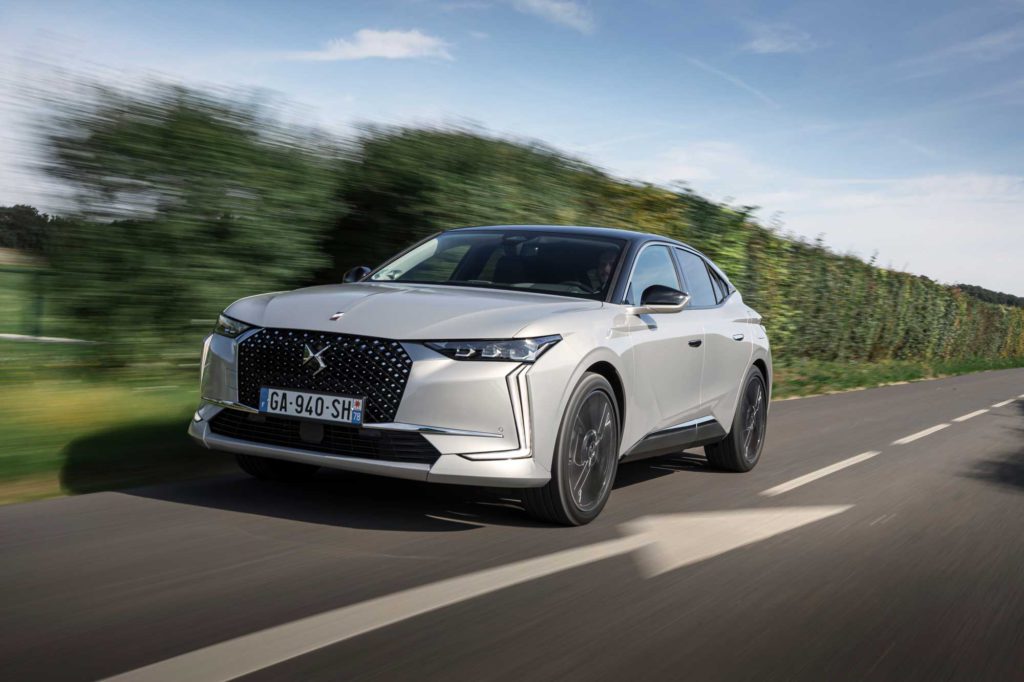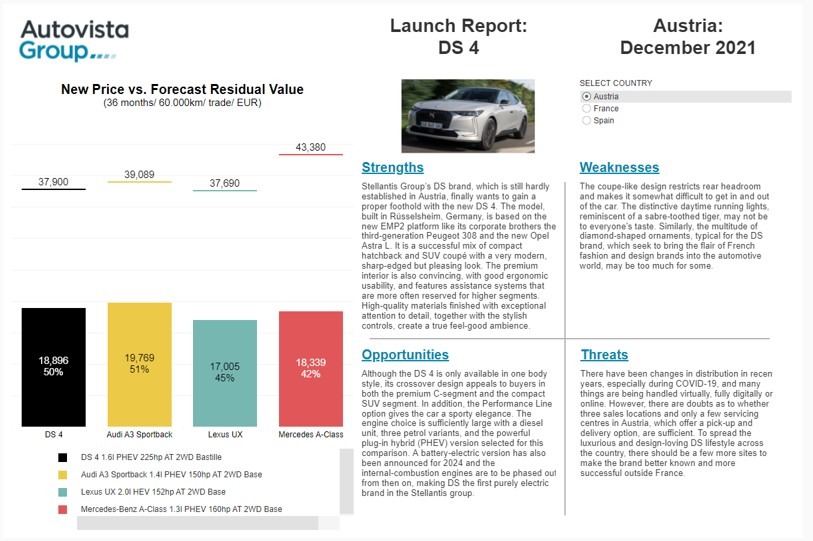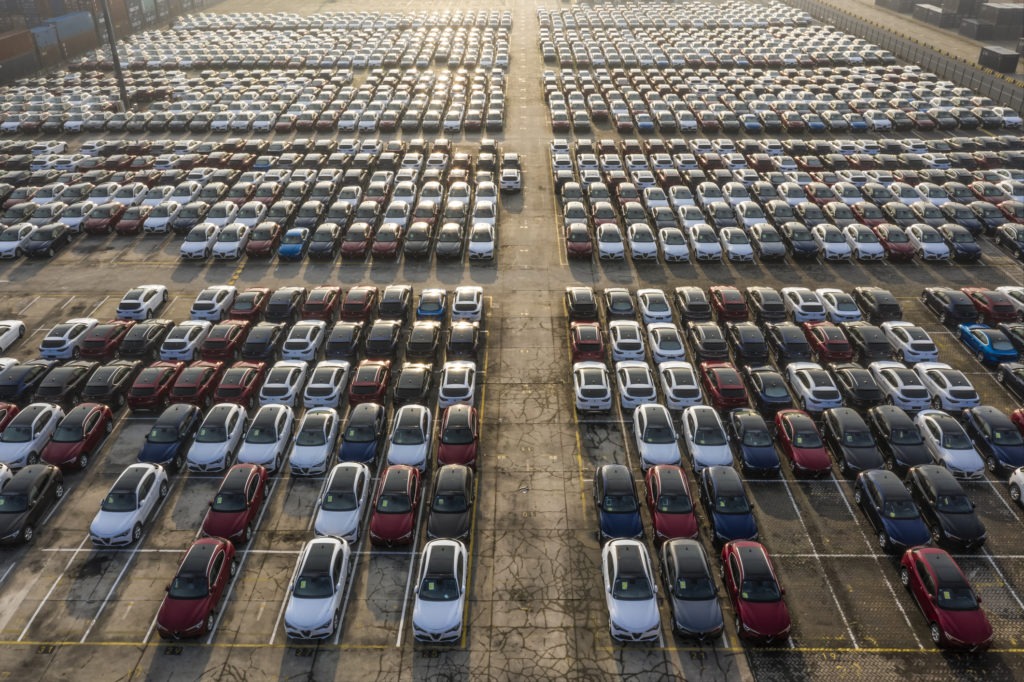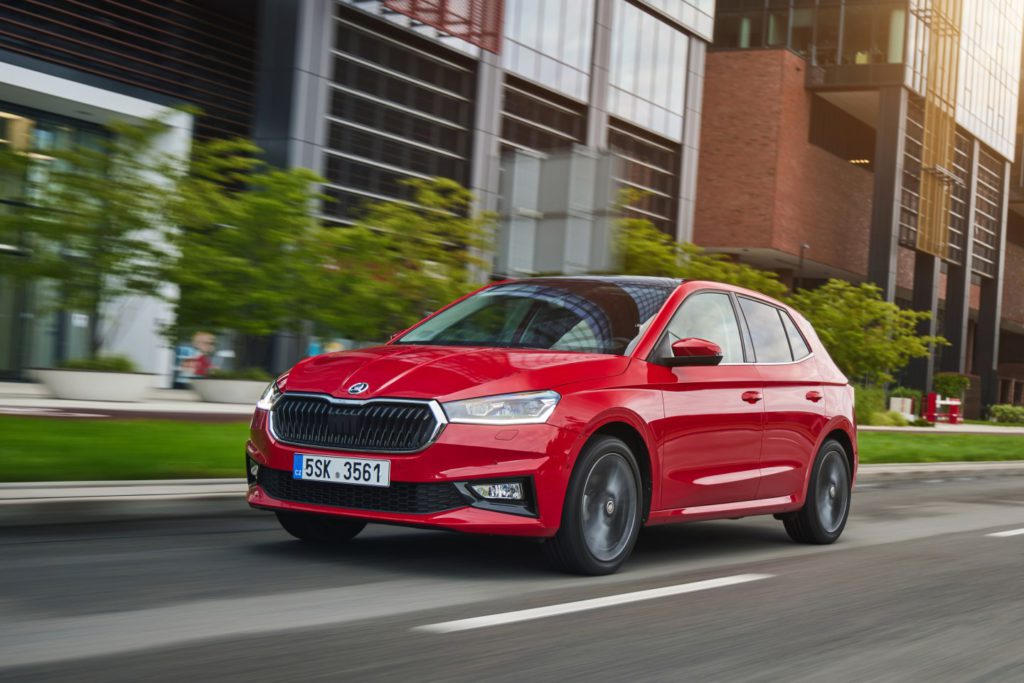Launch Report: DS 4 stands out among C-SUVs and premium hatchbacks
17 December 2021

The new DS 4 is a strong competitor to premium hatchback and C-SUV rivals. This is thanks to its successful design mix of compact hatchback and SUV coupé, which features prominent lines, pronounced shoulders, chrome parts, and aggressive front and rear design elements. However, the design means rear roominess is limited, especially for people taller than 1.8 metres. The restricted legroom and headroom makes it somewhat difficult to get in and out of the car.
Since separating from Citroën, the DS brand started to display its own identity with the launch of the DS 7 Crossback, and it is competing more directly in the premium segment. Being part of the extended Stellantis group gives the brand more credibility, but it is still linked to Citroën in the mind of the public and does not have very high sales volumes in many markets.
DS has traditionally been a short-term business brand and the DS 4 has a challenge to conquer more private sales and premium-brand buyers. As a young brand, its competence in this sector is still unproven and it needs to build a strong reputation to benefit its residual values (RVs). The C-segment is also highly competitive and increasingly abandoned by private users, who prefer compact SUVs. Accordingly, the segment is more fleet-oriented and the high fleet share presents a further risk for RVs at 36 and 48 months.
View the Autovista Group dashboard, which benchmarks the DS 4 in Austria, France, and Spain for more details. The interactive launch report presents new prices, forecast RVs and SWOT (strengths, weaknesses, opportunities, and threats) analysis.

The DS 4, built in Rüsselsheim, Germany, is based on the new EMP2 platform like its Stellantis siblings, the third-generation Peugeot 308 and the new Opel Astra L. Soundproofing is impressive and the ride comfort and roadholding are remarkable, especially when the predictive regulated suspension is coupled with 20-inch wheels.
The interior presentation is simultaneously elegant, sober, and ergonomic, with refined high-quality materials that, together with the stylish controls, create a feel-good ambience. The driving position is very good and the dashboard design is clean, with hidden air vents below the central screen. The new model has high technological content too. This includes the latest advanced driver-assistance systems (ADAS) and some innovations in this segment, such as the Matrix LED Vision, Active Scan suspension, and Night Vision systems.
The DS 4 is available at launch with one diesel and three petrol engines. It also comes as a powerful plug-in hybrid (PHEV) version. All of them have greater boot capacity than key competitors – 430 litres for the petrol and diesel versions and 390 litres for the PHEV variant.
All powertrains are fuel-efficient, but the performance of the petrol and PHEV units is, on average, slightly below direct rivals. The 50km-55km electric-driving range of the PHEV is rather low but a battery-electric version is scheduled for launch in 2024. The internal-combustion engines (ICE) are to be phased out from then on, making DS the first purely electric brand in the Stellantis group.
The DS 4 is a competitive premium choice in terms of design and price positioning, with a level of standard equipment that is better than direct rivals. Although it is only available in one body style, its crossover design appeals to buyers in both the premium C-segment and the compact SUV segment. This allows the car to avoid a direct fight with premium hatchback competitors, and crossovers are comparatively trendier. However, pricing is less competitive if customers consider mainstream rivals such as the Peugeot 308, which also has an appealing design and attractive equipment.



